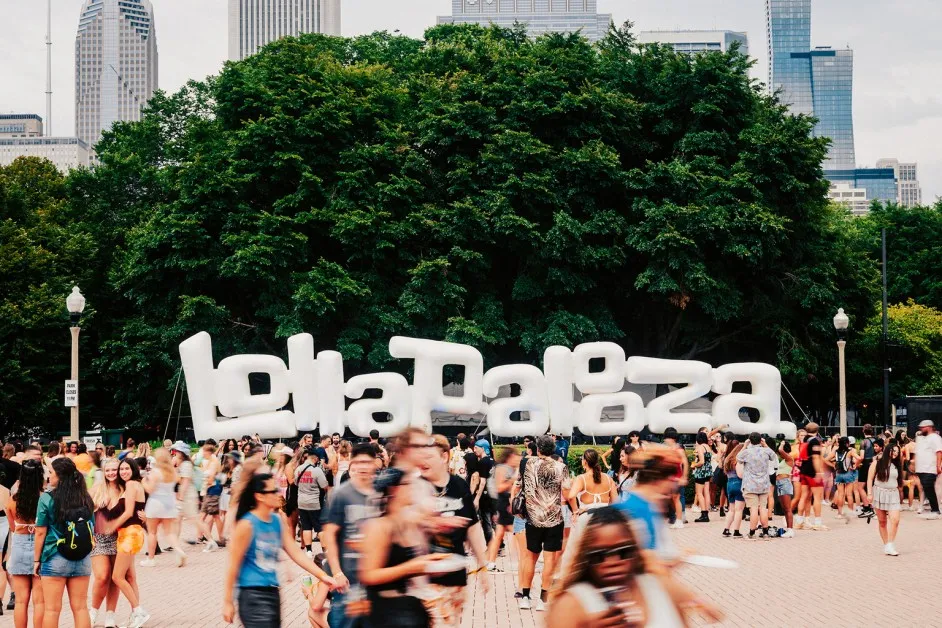Chicago’s biggest music festival leads the way in sustainable entertainment
CHICAGO, IL – August 2025 — Against the backdrop of a blistering summer and mounting climate anxiety, Lollapalooza 2025 has emerged not just as a music festival, but a case study in carbon-conscious celebration. Organizers announced that the four-day event cut total emissions by 67% compared to 2019 baselines, thanks to a robust set of sustainability measures—ranging from solar-powered stages to a new bicycle transit program that transported over 60,000 attendees.
While previous years saw Lolla criticized for its environmental impact—especially with high energy use and waste volumes—the 2025 edition flipped the script with a hybrid power infrastructure, zero single-use plastics, expanded public transit incentives, and a creative partnership with green tech startups.
🌱 Powering the Party: Solar, Batteries, and Smart Grids
At the core of the festival’s emissions drop was a hybrid energy model developed in partnership with GreenCurrent Labs and the City of Chicago. Three major stages—Lake Shore, Millennium, and Perry’s—were run entirely on solar arrays and portable lithium-ion battery packs powered by wind farms.
Meanwhile, diesel generators—once the workhorses of large-scale events—were relegated to backup use only. In their place, a smart energy control system directed loads to the greenest available sources in real-time, ensuring minimal energy waste.
Festival director Alison Duquesne emphasized the importance of energy reform:
“If we want large-scale events to survive the next decade, we have to reinvent how we power them. Our goal wasn’t just to make this year greener—it was to build a template for every major festival in America.”
🚲 Pedal Power: A Revolution in Festival Transit
Another highlight of the sustainability overhaul was LollaBike, a citywide initiative offering free bike valet, rental stations, and safe-access bike corridors into Grant Park. In total, more than 60,000 attendees chose bikes over cars or rideshare—cutting an estimated 800 metric tons of CO₂ emissions from traffic.
Lollapalooza and the Chicago Department of Transportation (CDOT) worked together to:
- Set up 10+ pop-up bike hubs with tire repair, hydration, and lockers.
- Offer e-bike charging docks.
- Offer a bike-to-badge discount program, providing cyclists with early entry and merchandise credits.
♻️ Waste Not: Plastic-Free & Fully Compostable
Lolla 2025 also saw a dramatic shift in waste strategy:
- 100% compostable foodware replaced plastic cutlery, cups, and containers.
- Reusable bottle stations were located every 500 feet.
- Vendors partnered with local compost companies to divert food scraps and biodegradable waste.
By the end of Day 4, over 85% of waste had been diverted from landfills, a staggering leap from 29% just five years ago.

🎧 Tech & Transparency: Real-Time Carbon Dashboards
New for 2025 was the GreenStage App, which allowed festivalgoers to view real-time carbon stats, including:
- Energy usage per stage.
- CO₂ offset contributions via ticket purchases.
- Emissions saved by choosing bikes or trains over cars.
Attendees could also voluntarily offset their travel emissions during ticket checkout, contributing to Midwest wind projects and local reforestation.
🌍 Artist Buy-In and Messaging
Lollapalooza booked climate-conscious headliners, including Billie Eilish, Bad Bunny, and Florence + The Machine—all of whom agreed to green rider clauses, ensuring:
- No private jets (all artists traveled via rail or shared flights).
- Eco-certified stage gear and outfits.
- Reuse of previous tour set materials.
Many performers used their stage time to speak about climate action, voting, and sustainability in the entertainment industry. Billie Eilish even hosted a surprise “Climate Listening Lounge” in the backstage area, bringing together fans and young activists for a panel on music and the environment.
💡 Community & Legacy
In partnership with Chicago Public Schools, Lolla pledged $500,000 to fund climate education and solar installations at local schools. In the meantime, surplus food and equipment were given to mutual help organizations and local shelters.Festival organizers plan to publish a public-facing sustainability blueprint to share their lessons, setbacks, and strategies with other major events globally.
🔮 What’s Next?
With climate concerns escalating across every industry, Lollapalooza’s sustainability success is likely to become a new industry benchmark. Organizers from Coachella, Bonnaroo, and international events have already reached out to Lolla’s green team for collaboration.
“We didn’t just make the festival sustainable,” said Duquesne. “We made it better—cleaner, friendlier, and more inclusive. People felt part of something bigger. That’s the real encore.”
FAQs: Lollapalooza 2025’s Sustainability Initiative
1. How did Lollapalooza cut emissions by 67%?
Through a combination of hybrid power (solar, batteries, smart grids), bike-centric transit plans, zero single-use plastics, real-time carbon monitoring, and green partnerships. Compared to its 2019 emissions baseline, the festival’s carbon footprint dropped significantly.
2. What stages were powered by renewable energy?
Three of the main stages—Lake Shore, Millennium, and Perry’s—ran on a mix of solar panels and lithium-ion battery systems. Diesel generators were used only for emergency backup.
3. How many attendees used bikes to get to the festival?
Over 60,000 attendees used bikes during the event. This initiative reduced thousands of car trips and significantly cut down transportation-related emissions.
4. Was public transportation also promoted?
Yes. The festival partnered with CTA and Metra to provide discounted ride passes and extended service hours. Riders using public transit earned loyalty perks in the Lolla app.
5. Were artists required to follow sustainability rules?
Yes. Major headliners agreed to green rider clauses, which restricted private jet travel and encouraged the use of sustainable materials for performances. Artists like Billie Eilish and Florence used repurposed tour equipment.




